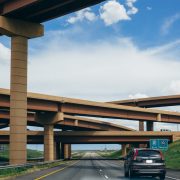Wet Weather Driving
Driving is an essential part of modern life – we all need to get to work and the shops, not to mention enjoy the freedom of visiting friends and family and going on recreational trips. But driving is not without its hazards.
Wet Weather
When it is raining, there are a number of things you should do to remain as safe as possible. When you get into a wet car, you will usually notice that the side windows and mirrors are covered in water droplets. Keep an absorbent cloth in your car for these occasions and wipe the droplets off so you have a better view of what’s beside and in your blind spot. Windex is another thing that’s good to keep in the car, as wiping down the windows can leave streak marks that can partially block your view too.
Wet Roads
Once you start driving, you will probably notice the interior of the windows starting to fog up. You can use your air conditioning to stop this.
Conditions on the road will be different, too. The road will be covered in water which reduces the grip your tyres have on the road. The road is especially slippery just after it has started raining – all the oils on the road create an oil slick before they are washed away, making driving particularly dangerous at that moment.
Due to this, you should slow your driving slightly to take into account the longer stopping distance in the wet. You should also increase the distance between you and the car in front. One of the most common accidents is when a car is tailgating another car and the car in front stops suddenly, causing the car behind to slide into it. This can be avoided with an increased following distance. Here at Great Western Driving School, we hope you’ve found this blog informative and wish you safe travels.




